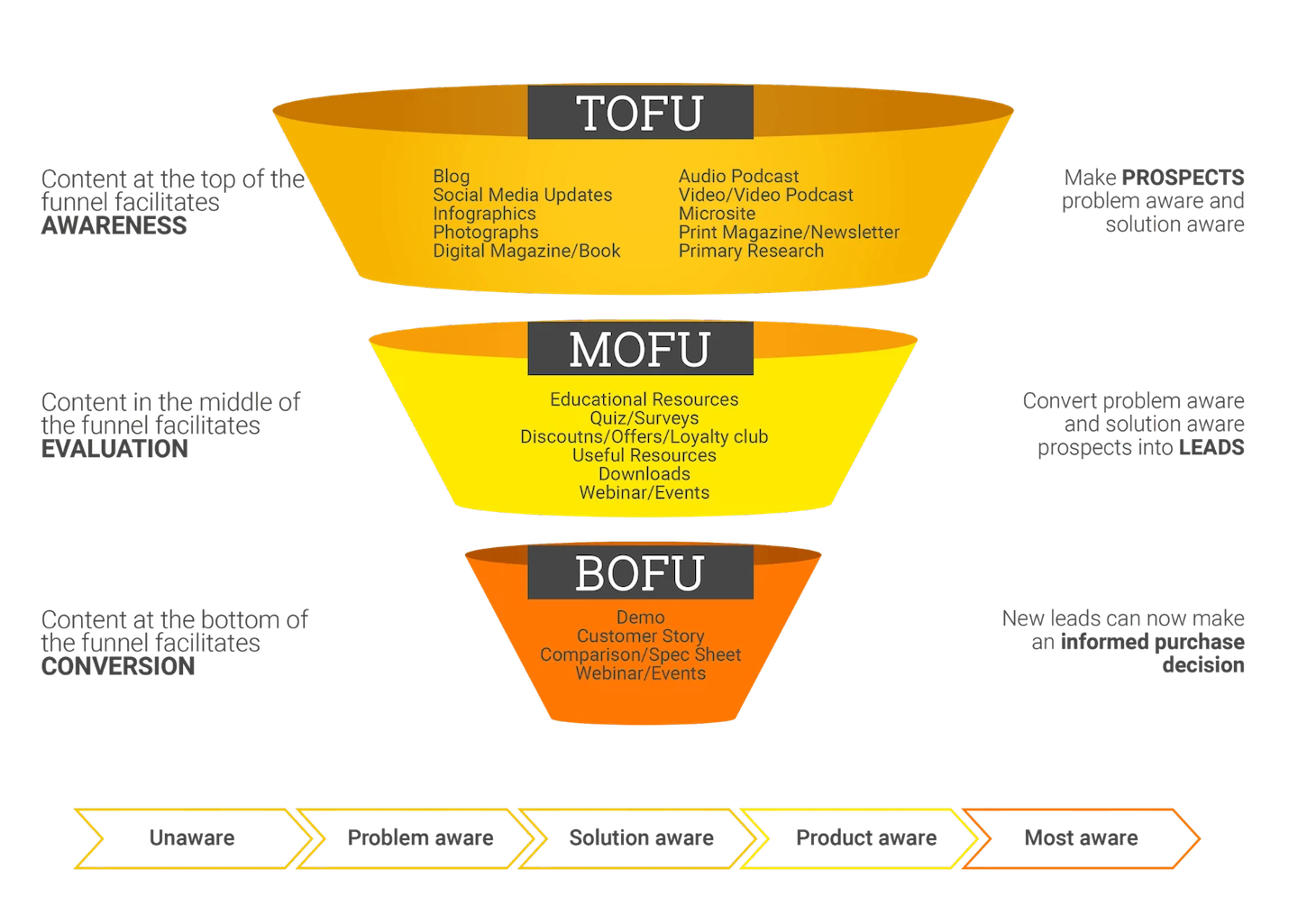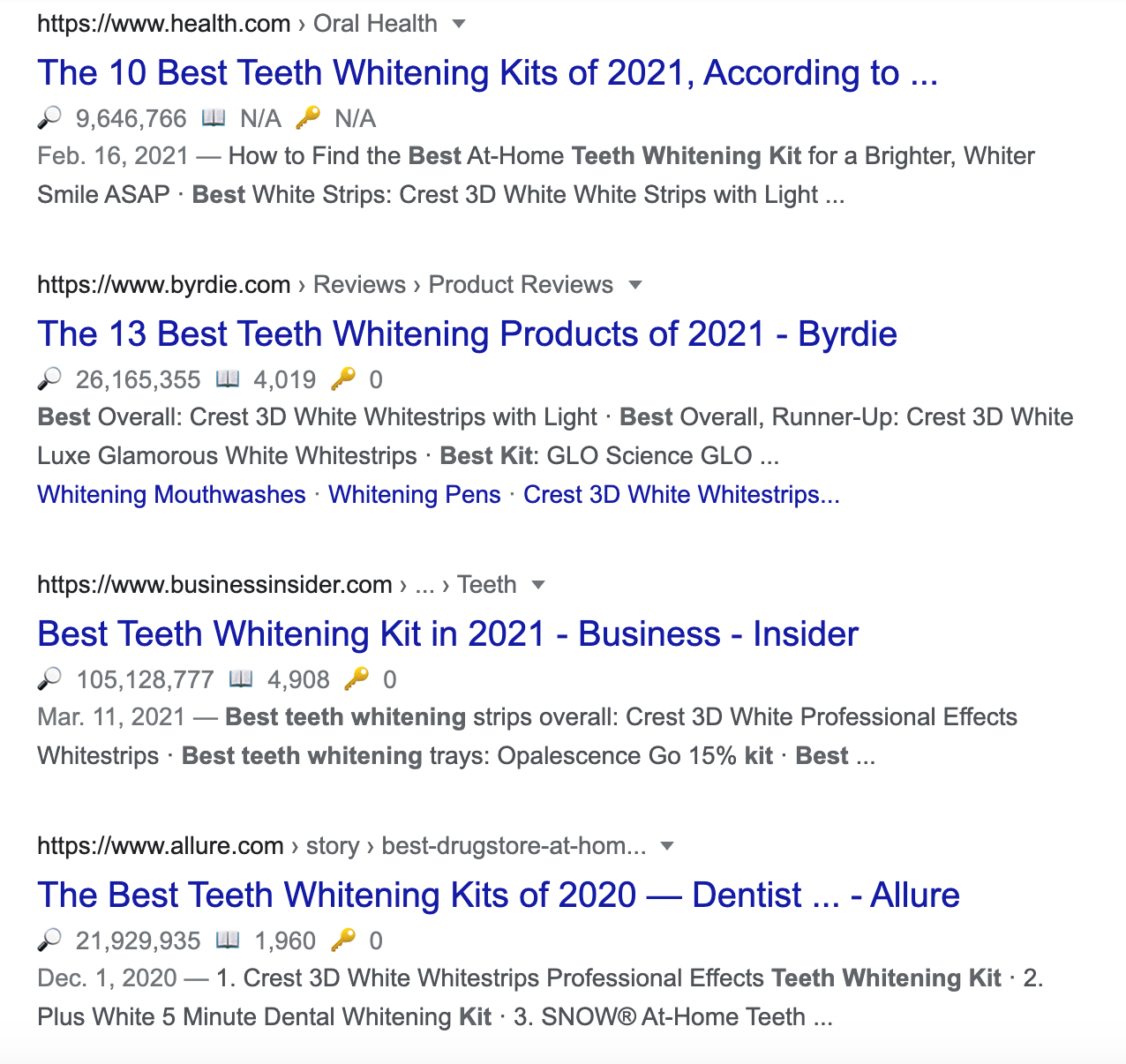Sending your data to our servers, please wait...





Oops... No results found.
Please try a different search phrase.
SEO 13 min read
SEO and the Conversion Funnel: How They Work Together
Written by Ayesha Renyard
Content Writer @ Galactic Fed
Expert reviewed by Dallin Porter
Marketing Director @ Galactic Fed
Published 30 Jun 2021
“If you are still focusing on selling, rather than how your customers are buying today, you may be missing some great business potential.”
-Martin Zwilling, Founder and CEO of Startup Professionals
It’s true, folks. To make sales nowadays, you can no longer center your marketing on the sale. Instead, you have to tailor it to the buyer’s journey. (As the old saying goes, “it’s not about the destination…”)
What’s a buyer’s journey? It describes the stages consumers go through before deciding to purchase a new product or service. A conversion funnel—like this one—is a way to visualize the buyer’s journey.

Source: SEOPressor
Why is it shaped like a funnel? The inverted shape represents how prospects drop off along the way to converting. Yes, we hate to say it, but not all who see your product or service will end up purchasing it.
Don’t give up quite yet. There are many ways to optimize your funnel so you can usher more prospects through the funnel. Today, we’re talking about SEO tactics. Surprised? You’re not the only one. While many businesses use SEO tactics, few consider the conversion funnel when creating a strategy.
So today, as part of our SEO Series, we’re explaining how your SEO strategy and the conversion funnel work together. By the end of this article, you’ll know which SEO tactics to consider at each stage of the funnel in order to score more leads and customers.
The Conversion Funnel: Recap
Before we dive into how SEO and the conversion funnel work together, let’s get you up to speed on what the conversion funnel is and why it’s important to this discussion.
As mentioned, the conversion funnel shows the path taken by a potential customer as they move towards becoming a customer—from getting their first glimpse of your brand to clicking “buy.”
Although you may see some depictions with three stages and others with four or five, they should all fit under three sections of the funnel: top of the funnel (TOFU), middle of the funnel (MOFU), and bottom of the funnel (BOFU).
How does the funnel inform your SEO strategy?
SEO is all about ranking higher in search engines’ organic search results. In our SEO Series, you’ll find an abundance of practices on how to improve your SEO—website optimization, link building, keyword research, and more.
Where does the conversion funnel fit into your SEO strategy?
- It informs your keyword research
- It helps you uncover target keywords for each stage of the funnel
- It guides your content creation
- It impacts your linking building strategy
- It draws attention to your web vitals
By analyzing your customers’ path to purchase, you’ll learn the types of search queries they’re making at each stage; and, accordingly, what content you should create and keywords to target. It also helps you become more attune to your link-building strategy and your website’s vitals.
For each section of the funnel, we’ll return to these areas of intersection to get you started with your own strategy. Ready to bring these two worlds together? Let’s get started at the top of the funnel.
Top-Of-Funnel (TOFU)
At the top of the funnel is the awareness stage. Here, you’re vying for the attention of those who may, or may not be, aware that they have a problem—let alone know of your brand. They’re totally browsing at this point. Think of it as the modern-day version of window shopping.
TOFU marketing is all about bringing awareness to your prospects’ problem, what’s at stake if they don’t deal with it, and then letting them know there’s a solution (*cough* your product).
Let’s say you sell teeth whitening kits. It would be pretty aggressive if you just blasted prospects with ads telling them their teeth are an unsightly yellow and need to be whitened. Show them the problem, don’t tell them.
The Crest television commercial below plants the problem beautifully. One woman complains to her friend that she took the “tissue test.” While she acknowledges that her teeth “aren’t perfect,” she was shocked to see just how yellow they are when compared to a piece of tissue. Thankfully, her friend has a solution for her—Crest Whitestrips.

Now let’s see how you can rope in your SEO efforts at the top of the funnel.
Keyword research
As you probably know, keyword research is the process of finding and analyzing actual search terms that people enter into search engines. The goal is to identify search terms that you can target in your content—to help you rank in the SERPs. These search terms range from single words (short tail keywords) to complex phrases (long tail keywords).
At such an early stage of the buyer’s journey, you may think that users are making broad queries, and you should target short tail keywords, right? Wrong!
Because prospects are still exploring the problem (and possible solutions), it’s more likely they’re making longer search queries in the form of questions. For example, when I Googled, “should I whiten my teeth?” people also asked:

Of course, you can do this research manually as I did above. Or, you could use a tool like Answer the Public to populate the top search queries for any given topic—within minutes! As you can see, it provides a ton of commonly-searched questions, which is the perfect springboard for targeting keywords.

Keyword targeting
After doing keyword research, you’ll have a good indication of what your prospects are asking at the top of the funnel—and how to speak their language.
As you can see in the results above, many questions about teeth whitening revolve around effectiveness and safety. So when it comes down to creating content, you’ll want to make sure to incorporate these questions into your copy. Make sure to have an answer handy too!
Content creation
Top of funnel queries are informational—so what sort of content should you be creating? Here are a few suggestions:
- Blog content: Blog content is a great way to tackle those hot topics you uncovered during your research. Peep this blog post on how to optimize your content. Including the target keywords in the titles and header tags, adding images and videos, and keeping your word count between 1000-2000 words are all good places to start.
- An FAQ page: Creating an SEO-friendly FAQ page is often overlooked—yet it’s so easy! Take those commonly-asked questions and address them directly on your FAQ page. Here, you can also link out to your longer blog posts. Internal links are just as important as external ones!
Middle-Funnel (MOFU)
In the middle of the funnel, prospects start showing interest in the solution. They may also begin to consider you as a provider of this solution. With that said, nothing is set in stone yet—so you need to do some convincing.
Thus, MOFU marketing is all about educating the prospect on the solution, the benefits they’ll get from it, and why they should choose your brand over others.
Even back in the 1980s, toothpaste brands were marketing alongside the buyer’s journey. In this 1987 Colgate commercial, Colgate uses results from a six-month study comparing Colgate and Crest to demonstrate it’s the superior solution for tartar buildup. (4.5 times better than Crest, to be exact.)

Let’s dig a bit deeper into how you can inject SEO into your MOFU strategy.
Keyword research
At this point, prospects want to learn more about the solution—and which brand can best provide it. Therefore, they’ll be making what we SEO experts call “commercial investigative” queries. They are queries that demonstrate intent to purchase something, but they don’t know which product or brand yet.
To conduct keyword research, look up your product alongside words such as “best” and “compare.” (For example: “best teeth whitening.”) This will likely surface a bunch of review posts, listicles, and resource pages.

Keyword targeting
After surfacing these review posts, resource pages, and listicles, how can you identify target keywords? Take a look at their content. How are they discussing or ranking these different products and services? If you can find common words or phrases, these could work well as your MOFU target keywords.
For teeth whitening, I noticed many listicles ranking brands according to affordability, suitability for sensitive teeth, and comfort. If you sold teeth whitening products, these keywords would be a great starting point for crafting MOFU content.
Content creation
Now it’s time to think up all the reasons why a prospect may or may not choose one brand over the other—tap into their pros and cons list—and make sure you have a winning case as to why they should pick yours. That should be your North Star for creating MOFU content.
Here are some examples to get you started:
- Case studies: Showcasing your product in the wild—and proving that it can successfully solve the problem at hand—will do wonders for your credibility. Prospects want proof!
- Blog posts: For MOFU blog content, you could target those topics uncovered during your research. Or, you could write a blog post that compares your product with your competitors’. Make sure to include both brand names in the title to score clicks from branded searches (like Crest does here).

Backlinking
Backlinking is a great SEO tactic for increasing traffic to your site—and after creating so much TOFU and MOFU content, it’s time to squeeze out all the benefits.
Remember those listicles, resource pages, and comparative blog posts you came across during your MOFU keyword research? Ask them to link to your content! That way, if prospects don’t see your content when they conduct a search query, they may still come across it indirectly—through one of these external pages.
Bottom-Funnel (BOFU)
If we’re talking BOFU content, then you’re THIS close to converting your prospects. They’re seriously considering purchasing from you—they just need a little nudge to go for it.
At this point, your focus will be less on keyword research and targeting and more on building an SEO-friendly site that supports an easy path to conversion.
(And hey—at this point of the buyer’s journey, a discount wouldn’t hurt either.)
Internal linking
Your prospects just sifted through all your MOFU content and are now inches away from making a purchase. Now what?
Well, where does your MOFU content link to?
If your prospects are close to converting, you have to make it easy for them. If they need to search far and wide for your pricing information, you run the risk of losing their business. So make sure to link all MOFU to BOFU content—such as live demos, product walkthroughs, reviews, pricing, and product pages.
A website that’s easy to navigate boosts your SEO, so we recommend linking your TOFU content to your MOFU content as well.
Web vitals
Google and other search engines weigh the user experience very heavily when ranking websites. (Let’s just say websites that aren’t mobile-friendly, have slow load times, and have poor navigation are not in Google’s good books.)
While many businesses neglect the technical side of their website, as of May 2021, it’s more important than ever.
Google will now also evaluate your core web vitals, which are three specific page speed and user interaction measurements. Take steps to improve them, and you’ll rank higher on the SERPs. And for those already on your website and ready to convert, this creates a seamless path to conversion. After all that hard work, you deserve it!
Source: Search Engine Journal
Ready to Make an SEO Power Move?
What first seemed to be an unlikely pair are now looking like the perfect match, aren’t they? Ready to sync up your SEO efforts with your conversion funnel? Talk to our team of SEO experts today!

Ayesha Renyard
Content Writer @ Galactic Fed



